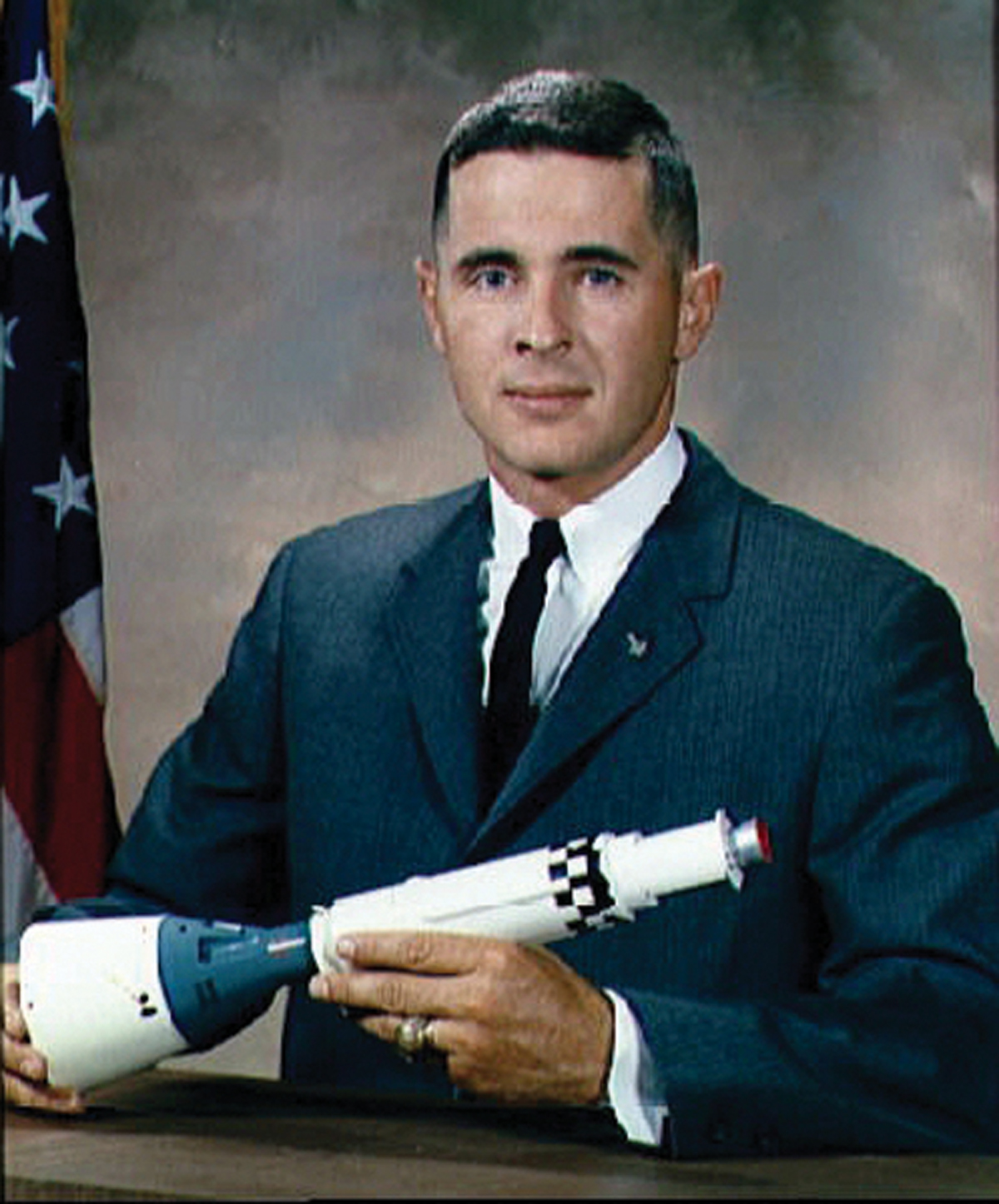Featured in 2007
William Alison Anders entered the U.S. Naval Academy at Annapolis, Md., in 1951. After his second year at the academy, he took a Navy indoctrination cruise that caused him to give more thought to aviation.
“The ‘carrier cruise’ had a negative effect; they had so many accidents and destroyed so many airplanes,” he said. “But I flew a couple of times in a Navy airplane, and I liked it.”
At the time, the Navy was allowing 25 percent of the class, both from the Naval Academy and West Point, to be commissioned in the Air Force.
“Ten thousand feet of Air Force concrete runway seemed to be a lot better than a short carrier deck,” he said. “I went Air Force and have been happy ever since,” he said.
Anders graduated with a B.S. from the academy in 1955. After receiving his Air Force commission, he flew the T-34 Mentor and T-28A.
“Then I was in the first ‘all jet class,’ which meant we went to the T-33,” he said.
After advanced training, Anders was assigned to one of the Air Defense Command’s all-weather interceptor squadrons. Stationed at Hamilton Air Force Base near San Francisco, he flew F-89 Scorpions with the 84th Fighter Interceptor Squadron. He was later stationed in Iceland for a year. There, with the 57th Fighter Interceptor Squadron (“The Black Knights”), he took part in early intercepts of Soviet bombers that were testing America’s air defense capabilities.
“I think I’m the first guy to give the famous Tom Cruise gesture to the Russians,” he laughed. “We came up alongside, and they were waving. I flipped them the bird. They waved and smiled.”
After returning to Hamilton Field, Anders flew the F-101B Voodoos, again with the 84th FIS. While there, he seriously thought about becoming a test pilot, which required acceptance at the Test Pilot School at Edwards Air Force Base. He made a trip to the base to talk to Chuck Yeager, who ran the school.
“He looked at my record and said, ‘Your flying time is good, but now the Air Force is looking for people with advanced degrees; why don’t you apply to the Air Force Institute of Technology?'” Anders recalled.
He did, hoping to take aeronautical and aerospace engineering courses. Instead, the Air Force was interested in him for the Airborne Nuclear Propulsion program and shuffled him into nuclear engineering. He received a master’s degree in nuclear engineering in 1962 and an assignment to Albuquerque, N.M. He took over technical management of nuclear power reactor shielding and radiation effects programs at the Air Force Weapons Laboratory. That same year, he returned to Edwards to talk to Yeager.
“I said, ‘I’m ready; sign me up,'” he recalled. “Yeager said, ‘We’ve changed the criteria; now we want flying time.'”
The school had made some changes. In the space race, the Soviets had launched the first satellite and orbited the first human. In 1959, the National Aeronautics and Space Administration had selected seven veteran test pilots as Mercury astronauts. In May 1961, Alan Shepard became the first American in space. That same year, the Test Pilot School became the Aerospace Research Pilots School and began offering a space course. NASA began recruiting from the school’s graduates for its corps of astronauts. In 1962, nine more astronauts joined the original seven.
One Friday in 1963, while driving home from work, Anders heard on the radio that NASA was looking for a third group of astronauts.
“I didn’t pay much attention, because up until then, you had to be a test pilot,” he said. “But then I thought I heard them say you had to be a test pilot or have an advanced degree. I immediately pulled over to the side of the road. Finally, they repeated that it was advanced degree or test pilot school.”
That evening, Anders wrote a letter to NASA.
“I told them I was just the guy for them, and that I could solve their radiation problems,” he said.
Soon, Anders was asked to report for a physical, and then, to come back for a final interview. In 1963, he received a well-timed present.
“On my 30th birthday, Deke Slayton called me and said, ‘How would you like to work for us?'” Anders remembered. “I said, ‘I’ll be there!'”











